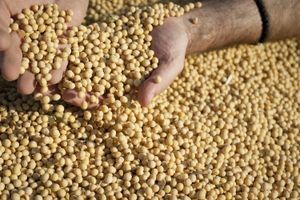China’s Import of U.S. Soybeans at a 20-month High
 One year after China did not import even one ounce of US soybeans as the trade feud was escalating at the end of 2018, in November 2019, China – which has found itself roiled by soaring food prices – saw its imports of US soybeans surge to the highest in 20 months after more American cargoes cleared customs ahead of the alleged signing of the Phase One trade deal in January.
One year after China did not import even one ounce of US soybeans as the trade feud was escalating at the end of 2018, in November 2019, China – which has found itself roiled by soaring food prices – saw its imports of US soybeans surge to the highest in 20 months after more American cargoes cleared customs ahead of the alleged signing of the Phase One trade deal in January.
According to data from China’s Customs Administration, China’s inbound shipments from the U.S. more than doubled to 2.6 million tons, the highest since March 2018, and up from about 1.1 million tons in October. As noted above, in November of 2018 – when the trade war between the two nations was escalating rapidly – China imported no U.S. soybeans.
As Bloomberg notes, citing USDA data, China’s total commitments in the current marketing year hit 10.5 million tons, compared with just 2 million tons the previous year.
Chinese companies are likely to continue purchasing American soybeans especially if the two countries sign the partial trade deal in early January, in line with the market’s expectations.
That said, China was quick to pretend like the surge in US soybean purchases was in fact some concession, and shortly after the news of the import jump hit, China’s infamous twitter troll, Global Times editor Hu Xijin, tweeted “congrats to US farmers” adding a tacit threat that US farmers should “prod” the US government to sign the Phase One deal if they want China’s vital goodwill to continue, to wit: “meanwhile please prod the US government, making sure the two countries can sign phase one deal smoothly and the next trade talks continue to make progress. This is vital to stabilize China’s purchase of US farm products.”
What he really meant was that China, where we will soon need a bigger chart to show soaring food hyperinflation (and middle-class anger at surging good prices) is desperate to buy US agricultural products to keep prices lower, and with every passing months, Trump’s negotiating leverage rises in lockstep with Chinese food inflation.
Source: AgriMarketing
